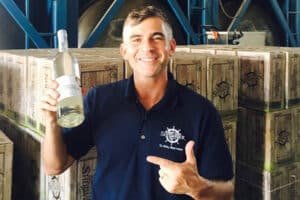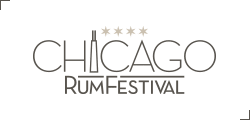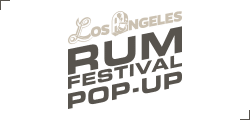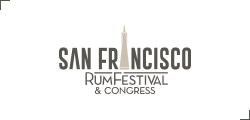A Story of Pirates and Grog

On October 14, 2020 we held on the ZAVVY platform a livestream event with the theme of “Exploring the History of Pirates and Grog Rum”, “The Rum Lab” hosted the event, which featured the participation of Fede Hernandez and Gareth Noble, one of the directors and founders of Pirate’s Grog Rum. The First segment of the presentation briefly discussed the guest’s background and how he came to work in the rum business.
About Gareth Noble
Gareth Noble and his fiancée made the decision to go to California after he completed his undergraduate studies and had enough money to travel throughout the state for a few months. They traveled from California to Roatan, where they worked on Gareth’s house for six months. It was during this time that they encountered Pirates Grog, a new rum brand on the island, which quickly became one of Gareth’s favorites. He also enjoyed drinking it a lot.
Robert Van Der Weg, the founder of the brand, invited Robert to see the operations and how rum was made on the island the following day, after they had finally met in one of the West End bars and conversed about rum and swapped stories. Robert learned about the history of rum, which brought him closer to this world. He was eventually approached with the idea to distribute their products in England, launch new products, and give the company a new image with a new logo.The business has now been operating effectively for six years, and its rums have garnered several accolades.
From the Caribbean to the Whole World
The distillery’s founder, Robert J. Van Der Weg, spent a considerable amount of time perfecting his rum recipe.He has spent around 20 years living on the island of Roatan. After working in a variety of various businesses for a time, the serial entrepreneur decided to launch the island’s first rum. He has traveled the world with his family.He has a great palate for drinks and like tastes like cognac and others that are similar.
The flavor profile of the five-year-old rum and the thirteen-year-old rum leans a little more to that side as a result, although not being as sweet. Robert J. Van Der Weg sold about 15,000 bottles of rum in his first year. He distributed his rum to pubs all across the city. However, because to the low profit margins, he barely made enough money to survive by. Because of the higher profit margins in the UK and Europe, the company decided to focus on advertising and selling his rum there. It plans to return to Central America and compete with Flor de Caa in the future years.
Pirate’s Grog: Expanding Horizons
Pirate’s Grog has a little distillery where they make their own rum. They also make it in London, and they have plans to establish a distillery in Honduras in the future, which will allow them to significantly boost their output. At their little distillery, they create a typical still rum. In their mini distillery, they combine three of the rums to create their five-year rum. This offers them an excellent balance and consistency for their 13-year-old rum, which they make by blending part of their own rum with rum they buy from a Panamanian distillery. The company uses its own blends and recipes, but because it is still relatively new, there are some restrictions on the types of rums they can offer. As the business expands daily, they are currently exploring new flavors for their rums and intend to introduce new products to the market.
Pirate’s Grog Products
5 Year Aged Rum:
One of Pirate’s Grog’s offerings is their five-year-old rum, a combination of four rums that have all spent five years maturing in bourbon oak barrels. This gives it a lovely golden hue and a smooth, warm flavor with hints of caramel, vanilla, and sultanas. This entry-level rum is enjoyable to sip neat. It is fairly light and has flavorful smoothness. Additionally, it is a high-end component in cocktails. The company presents the same product in a gift-worthy manner, including a treasure chest, a book on rum, a personalized scroll, and a bottle of five-year-old rum.
The sale of gift boxes is one of Pirate’s Grog’s marketing techniques. The firm sells gift boxes in two sizes: small and big. The large gift box is the perfect present for rum lovers, while the tiny gift box is a fun item to get. Gift box sales help Pirate’s Grog maintain a strong relationship with its clientele. Selling gift chests enables the firm to accomplish its dual brand objectives, which are to produce high-quality items and to have as much fun as possible.
13 Year Aged Rum:
The business wants to do something unique with Pirate’s Grog No.13 rum. Those people had made an outstanding mix after finding a particularly exceptional barrel. They worked very hard to display the bottle in the best possible way while yet attempting to preserve the integrity of the original cask. They created an exceedingly intricate label and located London’s oldest label maker. The definition of the label is incredible, and all of the techniques they employ are very conventional and classic. The initial batch’s labels alone cost roughly £5 per bottle. Everything was embossed, and there were metallic golds and tans throughout. It is a very beautiful bottle.
Black Ei8ht Coffee Rum:
To create Pirate’s Grog coffee rum, the producers combine Brazilian coffee and five-year-old rum. A very lengthy amount of time—24 hours—is spent macerating this in the cold. Without straining the beans, this method enables the retrieval of the entire flavor of the coffee. As a result, the flavor of Pirate’s Grog coffee rum is particularly strong.
The firm uses Brazilian coffee beans because they have an extremely chocolaty taste. You get a pretty tasty combination when you combine five-year aged rum with these chocolate and coffee flavors. The flavors blend together flawlessly.
Pirate’s Grog Spiced Rum:
The firm combines five-year-old rum with natural spices to create Pirate’s Grog spiced rum.The business employs spice buckets filled with salted caramel, cinnamon, and flowers to add a sense of flowery flavor. Overnight, the spices are steeped in rum. The firm prefers natural spices because they provide a richer flavor.
The business strives to maintain a natural emphasis in all it does and thinks this results in superior flavor. Even though the firm has stayed loyal to its beliefs of utilizing aged and natural rums without sweeteners, Pirate’s Grog spiced rum has been a highly popular product.
The product’s development took the corporation two years since it wanted to make something that would appeal to everyone.The company chose to include its final rum release, the spiced rum called Pirate’s Grog, in the gift box, and the outcome has been a complete success. Customers may try the three rums the firm produces and discover more about the brand by purchasing the gift package. Social media has enabled the business to have a pleasant connection with its audience by generating a lot of consumer contact.
When did the Rum Industry Start Linking the Rum Industry with Pirates as a Marketing Strategy?
One of the most well-known instances is the “Captain Morgan” brand, which entered into a relationship with Seagram’s in 1945 and adopted Captain Morgan as its logo to become one of the most significant rum brands. Pirate’s Grog, on the other hand, has made an effort to approach its goods differently, moving away from the stereotyped portrayal of pirates and emphasizing the more true-to-life aspect of piracy.
In general, pirates were very liberal and progressive people. Many of them were described as winners and even had same-gender marriages. Additionally, there were a variety of races on their ships. Including black slaves and white sailors fighting together, which was against the rules at the time. Over time, people gave them the reputation of being violent and erratic people.
The Rum Market: The Influence of the Big Companies and the Role of Boutique Brands
Large alcoholic beverage firms like Diageo have a lot of market clout. When one of these businesses buys a premium rum brand, like Ron Zacapa, it may increase customer awareness and accessibility of the product. This may occur in a number of ways. For instance, representatives of these businesses could go into bars and stores to advertise and suggest their goods so that the bars make room on their shelves for the high-end goods of these businesses.
Before premiumization takes hold in the rum industry, smaller boutique brands frequently debut for a few years. There are numerous of these companies that market their products, educate consumers, and help them understand rum better. Big companies like Diageo and Pernod Ricard view this as a commercial opportunity. As traction starts to build up and purchase a large premium brand to take it everywhere. This is effective and opens doors since, regardless of brand, the more rum discussed, the better.
Pirate’s Brand Strategy
The goal of Pirate’s Brand is to distinguish itself from other rum brands. Grocery stores typically sell these items, because they are easily accessible. This indicates that they are rums that can aid in the discovery of an excellent, reasonably priced rum. After tasting their own rums, consumers could be more inclined to sample more expensive rums.
That’s where Pirate’s Brand steps in, allowing customers to sample their assortment of rums. They also sell many of their other brands in London, the US, and the Caribbean. These are higher-quality rums that you may get at the lower end of the market. They are therefore more like entry-level rums.
Rum, the Pirates’ Drink
Rum has been used as money for a very long time. It was accidentally created in Jamaica or Barbados by fermenting molasses left in a barrel. As a byproduct of sugar production, rum quickly replaced gold as the second most valuable currency in the Caribbean.
Seafarers traded rum because it was a commodity that could be kept on ships without rotting and was a useful source of energy for them. They received warmth and vigor from a tiny amount of rum, which enabled them to continue. That drink therefore became crucial to sailors’ survival as well as to those of pirates, who pillaged naval ships and stole rum. They considered robbing gold and rum from a French or English ship to be a successful day’s work.
Roatan: A Pirate Haven in the 17th Century
Pirates liked to hide out on islands like Roatan because they were remote from the trade winds. During the 17th century, Roatan was a pirate haven. Pirates could leave the island, attack a ship, take the treasure and the men who wanted to join their crew. The pirates could throw the rest of their cargo overboard and return to Roatan, but they risked being stuck there with no wind for weeks.
The island was mostly empty between 1550 and 1700, however it was occasionally invaded by the British and the Spanish . As a result, the island was able to be colonized and inhabited by pirates. At its peak, Roatan is said to have been home to up to 5000 pirates. The island was a superb pirate base because of its convenient Caribbean location. Off the coast of Roatan, pirates may attack merchant ships and take their cargo. The War on Piracy, which began in the late 17th century. Put an end to the heyday of piracy on Roatan.
The World’s Last Pirate Graveyard
Most people associate pirates with the Caribbean, but if you travel to Africa’s southernmost point, you’ll find Madagascar, Réunion, and Mauritius. Ships leaving India would go through these three islands before rounding the Cape of Good Hope and sailing back to Europe, particularly Britain, which had ties to India.
When the French were in charge of this waterway, they would kidnap British ships as they reached the Cape of Good Hope. The British eventually became weary of this and conquered Mauritius, which then become a British island.
Off the coast of Madagascar, there is a little island named Île Sainte-Marie. It is stated that everyone who lives there is descended from pirates. It is the world’s only remaining pirate cemetery. You must traverse a treacherous trail through the mangroves to reach a little island. That is only visible during low tide. The British eventually became weary of this and conquered Mauritius, which then become a British island.
The Origin of the Drink “Grog”
In the 18th century, the British Royal Navy was where grog was first created. Admiral Edward Vernon, well-known for his grogram coat, was a frugal guy who intended to limit alcohol intake. And its detrimental effects on discipline by diluting the rum provided to sailors.
Vernon combined the rum with water in a mixture of two thirds water and one third rum.The Royal Navy designated grog, a mixture of rum, water, and sometimes sugar and lemon juice, as its official libation in 1740. Because the pirate grog had a comparable alcohol concentration and continued the island of Roatan’s pirate tradition. Robert named his company after it. It’s a silly term with drinking and friendship connotations.
“Flor de Caña” Rum
Central Americans widely consume Nicaraguan “Flor de Caña” rum. In actuality, it dominates the local beverage market. Being financially viable in Central America is challenging for a tiny business like Pirate’s Grog. Since they do not enjoy the same reputation as Flor de Caña. Due to the larger profit margins in Europe, the corporation has concentrated on producing and marketing its rum there. Central Americans value fine rum, but there is also a high demand for less expensive rum.Despite the enormous volume and poor profit margins, this rum is frequently of extremely excellent quality. For instance, a 700 ml bottle of rum costs $10 USD or even less. He wants to expand his company’s market share in Central America as it develops.
Featured image: Real Food Hub














